The B-17 All American
The Truth Behind the Tall Tale
Wings ablaze with gunfire, the Messerschmitts pilot aimed his fighter directly at the nose of the All American. The crew aboard the B-17 Flying Fortress had seconds to respond. The bomber’s nose gun flashed in reply. The gunners of the lead bomber joined the fray, raking the air with bullets.
At the last moment, the fighter turned to pull away. Suddenly, the pilot froze – one of the American gunners had found their mark. The fighter shot right over the cockpit of the B-17 All American with a deafening “whoosh” before plowing into the tail section. The craft shuddered as a tremendous “whoomp!” tore through it.

The collision had torn a huge hole in the rear of the fuselage. The left horizontal stabilizer was gone. Shivering from the impact, the badly damaged tail section looked like it could go at any moment.
A quick head count of the stunned crew revealed that, amazingly, nobody had been hurt. Realizing they may only have moments left before their bird fell apart, they leaped into action. They grabbed their parachutes and prepared to bail.
Aware that every mile counted, the pilot kept them on course. They were flying above the Sahara dessert. Inhospitable at the best of times, the territory was bitterly contested.
Nobody expected the B-17 All American to hold together long enough to reach the base in Algeria.
The rest of the bomber formation moved closer to the crippled craft. Their overlapping lines of fire would stop any other fighters from getting too close. And the American fighters flew closer to the All American.
The mission had begun well. Despite heavy opposition, the formation had made it through waves of fighters and flak to reach their target. The All American had performed its bombing run without incident. As they turned to return to base, a pair of Messerschmitts had attempted to intercept them. But the gunners had kept them at bay, and the fighters had turned back.
Much later, the formation ran into 2 more Messerschmitts. The first sign of them was when they were spotted climbing towards the bombers from 2 miles away. This time, the German fighters pressed the attack. The German planes split up. One of them attacked the formation leader. The other dived straight at the All American.
With gunners from both bombers targeting them, both of the German planes were destroyed. The fighter attacking the lead bomber plunged from the sky trailing a plume of black smoke behind it. The second collided with the All American.
In a sense, the men on the B-17 All American were incredibly lucky. The Messerschmitts came within inches of hitting the cockpit. Instead, the bomber was still relatively intact and able to fly.
In fact, it managed to make it all the way back to the base. Of course, it had to limp back home. As soon as they were out of enemy range, the other planes in the formation sped ahead.
To the men on the wounded craft, the journey seemed to take a decade. Every little lurch and vibration threatened to shake the tail loose. But it managed to hold itself together, thanks to the rugged design of the B-17 and the delicate flying of the pilot, Kenny Bragg.
They managed to make it back to the airfield and landed safely, although not elegantly. The tail wheel wasn’t working, which was hardly surprising. 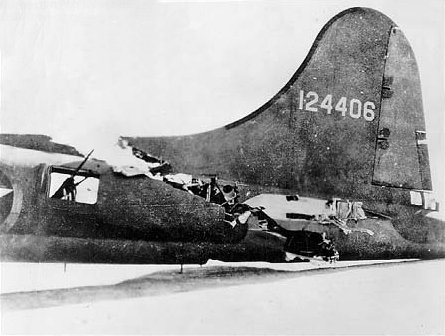 So they had to skid the last 100 yards. An ambulance had appeared, expecting to meet with scenes of horrible carnage. But it wasn’t needed. None of the crew were injured, and they were all able to walk away without assistance.
So they had to skid the last 100 yards. An ambulance had appeared, expecting to meet with scenes of horrible carnage. But it wasn’t needed. None of the crew were injured, and they were all able to walk away without assistance.
It was a stunning story and was living proof of the capabilities of the craft and the men who crewed her. And it was well documented, too. Photographs taken in the air and on the ground show the extent of the damage.
Without photographic evidence, most experts would doubt the truth. It just flies in the teeth of common sense to believe a B-17 could fly under these conditions.
The adventures of the B-17 All American are almost unbelievable. But it’s not the only impossibly true story from that era. The second World War was a time of great turmoil.
And while there were many disasters, there were also many events that could be called miracles. The stories of these amazing events live on to this day.
In the Internet age, many of these tales have reached a new audience. Technologies such as email, forums, and social media have spread the stories wider.
Of course, when people share an amazing story, there’s a tendency to embellish it a little. As the story is passed around, each layer of embellishment accumulates. Eventually, they can soon bury the truth.
Instead of an amazing true story, you end up with an impossible tall tale. And yet, almost always, there’s a great true story at the heart of it.
Without living witnesses, it can be hard to dig the truth from the exaggerations. Sometimes, it’s possible to find a reliable account from someone who was there.
In the case of the All American, we have an interview with one of her crewmen. The interview dates from 2012, and the crewman was one Ralph Burbridge. Ralph was a bombardier, and he lived through every moment of the event. It wasn’t the only close scrape the All American lived through, and it wasn’t even the worse.
But it was the most unbelievable. Like all good war stories, the tale of the B-17 All American and its close shave has spread from person to person. And it’s picked up more than a few embellishments over the years. The exaggerations have become more and more outrageous. In the end, the story has been twisted out of shape.
In 2012, an email made the rounds amongst aviation history buffs. It contained the most altered version of the story yet. By this point, the story was so twisted that it wasn’t just unlikely, it was impossible.
While it was entertaining, it was also full of impossibilities. The result was that many readers wrote off the entire event as fiction.
In the email version, the bomber was based in England. In reality, the actual base was Biskra, Algeria (which is only 300 miles away from Tunis).
Flying between England and Tunis would exceed the maximum range of the B-17. And that’s not all – it would mean flying over most of occupied Europe to reach the target.
A bomber in full working order couldn’t make the flight. There’s no way one that was falling apart could make it. Especially when you consider the exaggerated nature of the damage reported in the email.
In the email version, the All American was virtually ripped in half by the collision. The email described the crew tearing parachutes apart for materials to fix the bomber. They even used pieces from the wrecked German fighter!
The tall tale also had the gallant gunners dangling from the gutted fuselage to aim their guns. And that’s not all – they had to fire in short bursts because the recoil was pushing the bomber off course.
The events described in the email made for an exciting read. But they were also wildly inaccurate. In reality, the B-17 All American’s true story is amazing enough. So let’s remember the events as they actually occurred.
After all, the true story serves to demonstrate the courage of the airmen and the extreme engineering behind the B-17.
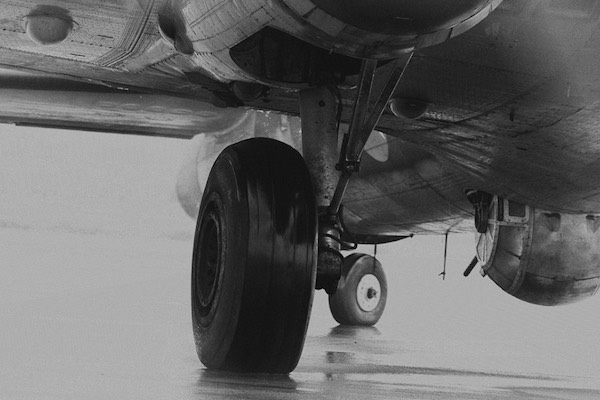
B-17 All American Offsite References:
//www.airspacemag.com/ist/?next=/history-of-flight/unbreakable-42839119/
//www.daveswarbirds.com/b-17/fuselag2.htm
//dof.media/photogallery/b-17/
A video example of the “tall-tale” version of the story that was emailed around:










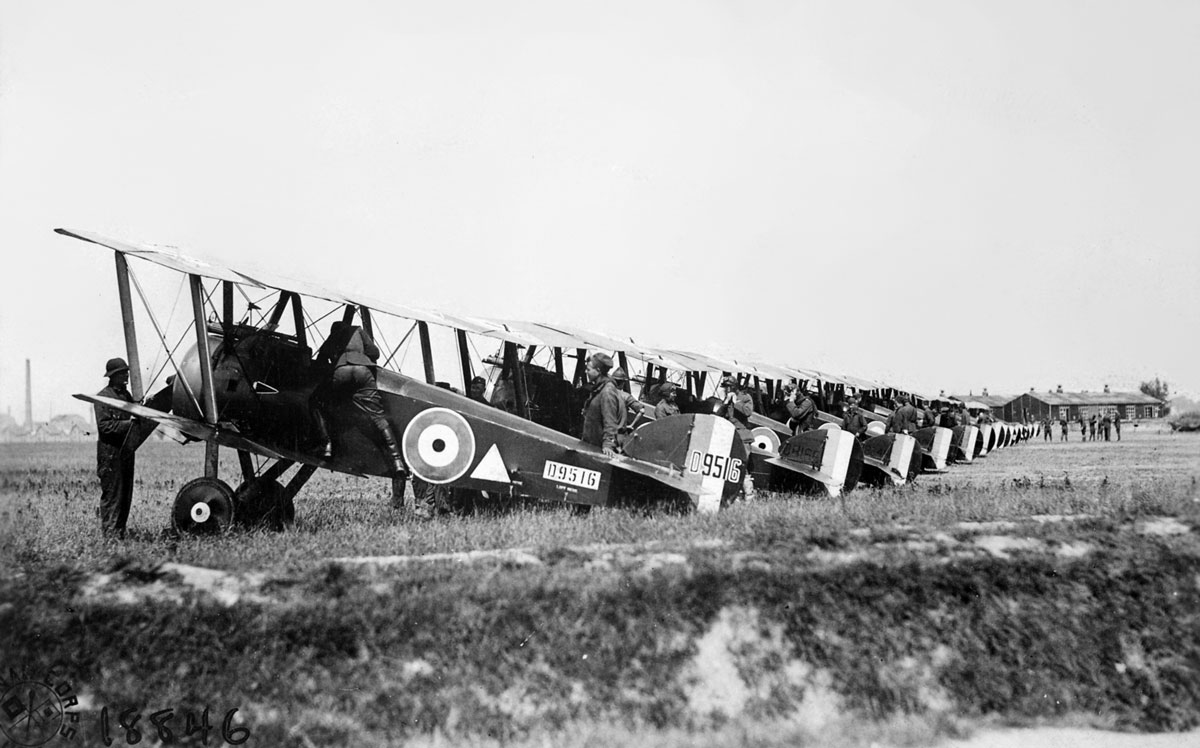

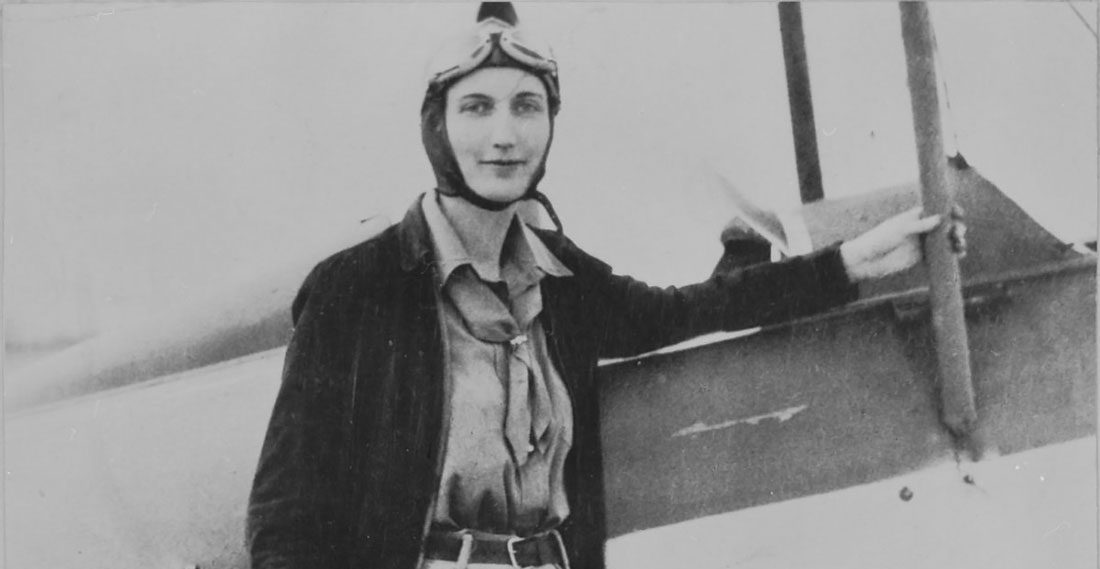
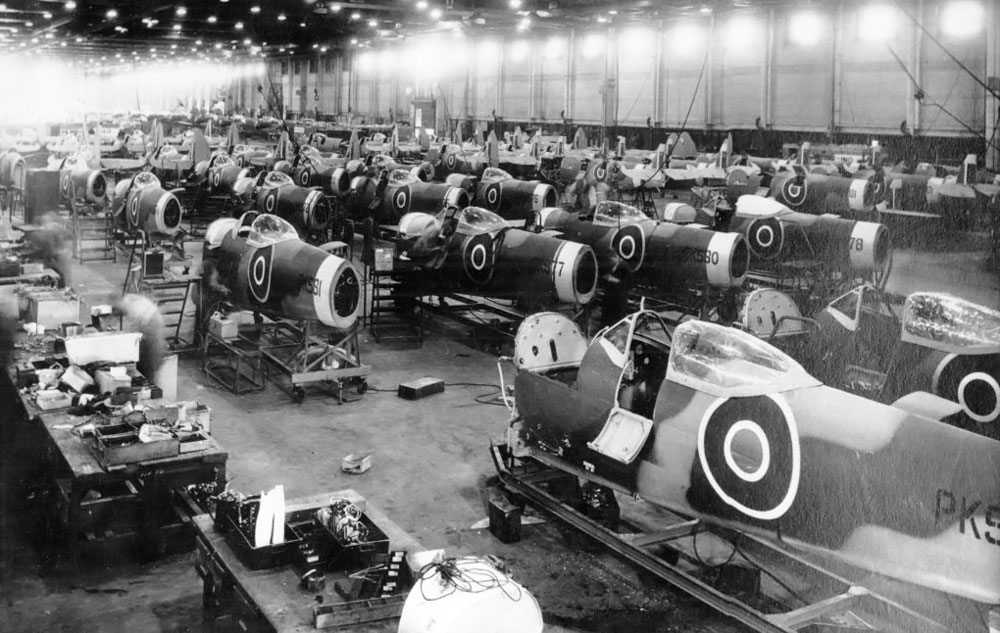
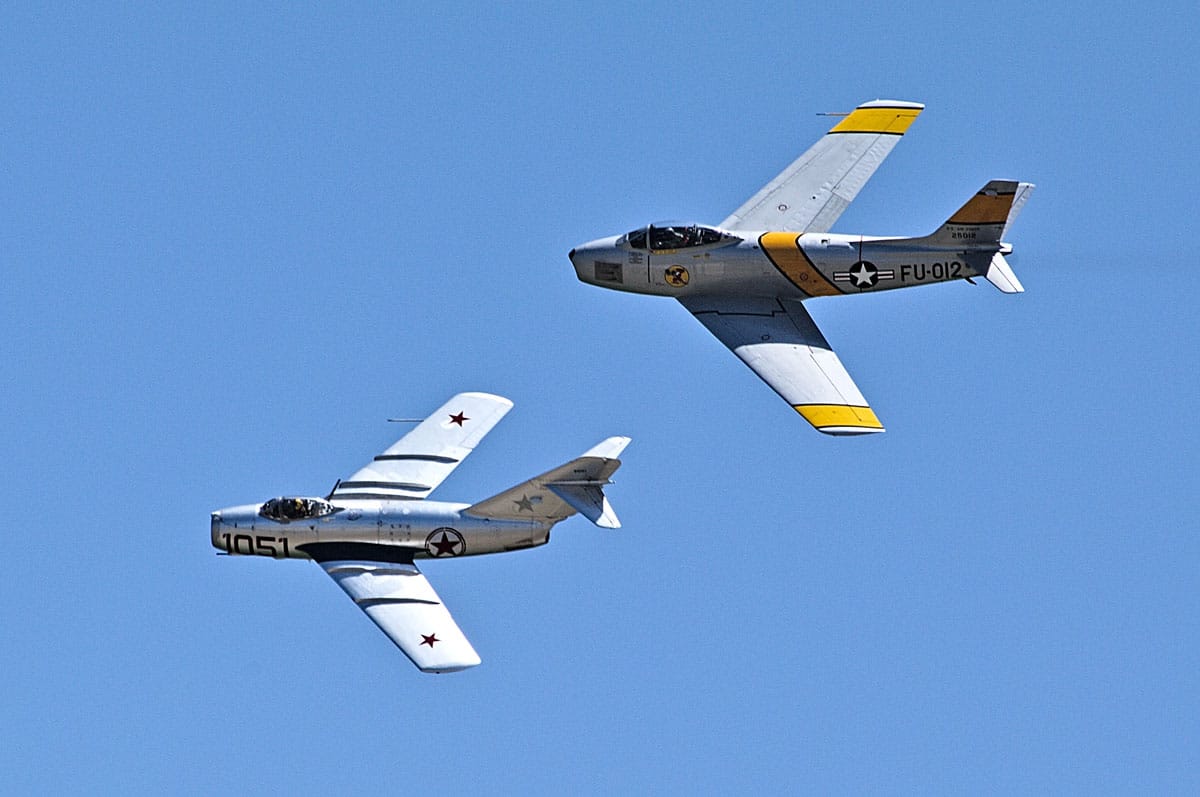

Thanks for your perspective. My grandfather is Ralph Burbridge. He passed away in 2013, at the age of 92. In fact, he was the final living crewman aboard that All-American. As time and energy allowed during his final 3 years, Ralph attempted to clarify the details of the above-incident. Truth was a foundation of Ralph’s life, so he felt compelled to dispell the unnecessary exaggerations that you referenced.
Kevin Burbridge
Thank you for this clarification. The tale had indeed become very tall. My father was the co-pilot on the All American, and his full name was Melville Guy Boyd Jr, but he went by Guy or Skip. I will attest to the authenticity of his signature under the photo in the letter. His war stories were our bedtime stories, minus the grizzly bits. The only thing I could add to the story would be that my father said after keeping “the bird” aloft, crippled as she was, it was hours before he could feel his arms again.
Dear Ms Moore,
Your father, Melville Guy Boyd Jr was not All American’s co-pilot. Melville was assigned to the 8th Air Force, 100th Bomb Group, 351st Bomb Squadron – not the 97th BG, 414th BS. According to the 100th BG website, on 25 May 1943, the 100th BG (Heavy, aka: The Bloody Hundredth), stationed at Army Air Base HQ in Kearney, Nebraska, were given orders to go to Bangor, Maine, then to England. The 100th arrived at RAF Thorpe-Abbots (Station #139) on 9 June and were assigned to the 13th Combat Bombardment Wing, with a group tail code of a “Square-D.” Almost four months after All American had her mid-air collision.
On 25 June 1943, Lt. Boyd and the crew of Nevada Wildcat Serial Number (SN) 42-30051, had their first combat mission (five months after All American’s collision). With these facts, it’s highly unlikely that Lt. Boyd All American’s Co-pilot.
Sadly, on 4 July 1943, while Lt. Boyd was the Co-pilot aboard a B-17 (SN 42-30051 and possibly named Nevada Wildcat), two of her engines failed and the crew bailed out. All but one, who evaded capture, were imprisoned in German POW camps through May 1945, when they were liberated. (MACR 00272)
Although Lt. Boyd was not All American’s Co-pilot, he’s still an All American hero!
AIRCRAFT: ‘Nevada Wildcat’ (42-30051)
Bomb Group 100th Bomb Group
Bomb Squadron 351st Bomb Squad
Fate Lost by enemy aircraft (4 July 1943)
MACR 685
Manufacturer Boeing
Production Block B-17F-5-BO: 42-30032 to 42-30131
History of B-17 42-30051 / Nevada Wildcat
04 April 1943 Delivered Cheyenne, Wyoming
15 Apr 1943 Kearney, Nebraska
02 May 1943 Wendover
15 May 1943 Hill, Utah
18 May 1943 Wendover, Utah
23 May 1943 Kearney, Nebraska
28 May 1943 Dow Field, Bangor, Maine
01 Jun 1943 Assigned 351BS/100BG [EP- ] Royal Air Force (RAF) Thorpe Abbotts, England
04 July 1943 Missing in Action (MIA) ~ ship lost power on two engines, and a third shot out by Me 109, crashed three miles W of La Pallice, near Isle D’Orlean, France
Missing Air Crew Report (MACR) 685.
Source: Dave Osborne, B-17 Fortress Master Log
American Air Museum in Britain (americanairmuseum.com) The go-to site for all things B-17 Flying Fortress and their crews
For All American’s actual crew roster, please see my post dated 25 May 2020
This comment has several issues to discuss:
First – The above video should be removed for its continuing repetition of many inaccuracies about what happened to the B-17 All American on 1 Feb 1943 AFTER her bombing mission to Tunis, Tunisia. That video includes some improbable and/or impossible events which may have been reported by the press in 1943.
Second – Over the years, Capt. Kendrick Bragg, Jr. – Pilot, and Lt. Ralph Burbridge – Bombardier (and his family), attempted to correct those inaccurate ‘puff pieces,’ which were probably written to be morale-boosters for the folks back home. Except for Disciples of Flight, Warbird Digest and airscape Magazine, the inaccuracies continue. They include, but are not limited to:
• The tail gunner was trapped at the rear, because there was no floor connecting the fuselage and tail. (But the fuselage of the plane was till intact.)
• The crew kept her tail connected to the fuselage with parachute cords and pieces of the German fighter. Ralph Burbridge, All American’s Bombardier, said they each wore their own parachutes and none were sacrificed to help keep the aircraft together. (Can parachute cords hold an 18-ton to 27-ton [empty to fully loaded] aircraft together?)
• Because they hadn’t yet dropped their bomb load (Burbridge confirmed they had), they continued to Tunis. Upon arrival, when the bomb bay doors opened, the turbulence blew a Waist Gunner into the tail section. After safely retrieving him, they couldn’t get the Tail Gunner (Sam Sarpolus), because his weight was needed to add stability to All American’s tail, so it wouldn’t break off. (According to Sarpolus’ 16 Oct 1940 Draft Card, he was 5’ 8” tall and weighed 150 lbs. And that kept the tail stable? And, according to Bragg and Burbridge, they already dropped their bombs as planned, over the Tunis Docks before the mid-air collision with a German fighter.)
• Because the German fighters just wouldn’t give up, two Waist Gunners allegedly stuck their heads up through the 16’ long gash (and shot at the enemy fighters with 84 lb Browning M2 .50. machine guns?). Burbridge said the German fighters did not re-engage, as the US bomber formation was beyond the Messerschmitts’ range capabilities. (Exactly just how slow can a B-17 fly, without ripping off spectators heads? And, airscape Magazine reported the crew did not any re-engage German fighters. And, at what minimum speed can anyone hold their head out the fuselage or window, without it getting sheared off?)
• “The Tail Gunner had to shoot in short bursts because the recoil was actually causing the plane to turn.” (Just when and how did the US Army Air Forces put Dora or Schwerer Gustav [the only two 1,500 ton, 155’ long, 23’ wide, 31½” German railway guns that were made] in that bomber? Not to mention each of the 7.7 ton bombs! And, Sarpolus only had two .50 cal M2 Browning machine guns. Hardly enough recoil to cause a B-17 to turn.)
• An Allied P-51 Mustang fighter pilot took All American’s aerial photograph over the English Channel. (NOT true, for two reasons: according to Harry C. Nuessle, All American’s Navigator, Lt. Cliff Cutforth, a Navigator aboard a B-17 named the Flying Flitgun, assigned to the 97th BG, 340th BS, took the aerial picture. And, a semi-close look at her aerial photo reveals she was over what appears to be arid land and a few hills, NOT water when the pic was taken.
o A B-17’s maximum range, according to the specifications on Wikipedia, is 2,000 miles. The All American was not station in England during this mission. A US AAF base at Colchester, England [the closest WWII English airbase from Bikstra, Algeria, All American’s base] was approximately 1,400 miles to Tunis, Tunisia – one way. The B-17 simply could not and would not attempt that trip, when their ASSIGNED BASE at Biskra, Algeria was about 300 miles away from their target in Tunis, Tunisia. And, since 13 Nov 1942 until 1 Feb 1943, she was combat-damaged by a German Messerschmitt fighter, it’s improbable that she flew to England.
25 Dec 1942 Biskra, Algeria
o A fairly close examination of All American’s aerial photo, reveals what appear to be hills amid somewhat arid land, not water. She was not over the English Channel when Lt Cliff Cutforth, the Navigator aboard the B-17 Flying Flitgun, took the aerial photo. No other person took that picture.
• In various documents, several people MISidentified 2nd Lt Melville Guy Boyd, Jr. (ASN 0797960) as All American’s Co-pilot. A comparison of his 15 Feb 1942 Draft Card signature with that on the Nuessle letter, pretty much confirms that is probably unlikely. And, he was assigned to the 13th Air Force, 100th Bomb Group, 351st Bomb Squadron – not the 97th BG, 414th BS. Sadly, on 4 July 1943, while he was the Co-pilot aboard the B-17 Nevada Wildcat SN 42-30051, had two of her engines failed and the crew bailed out. All but one, who evaded capture, were imprisoned in German POW camps through May 1945, when they were liberated. (MACR 00272). Although Lt Boyd was not All American’s photographer, he was still an All American hero!
Also, for the last 77-years, a few inaccuracies about All American’s crew members, have been repeated, time and again. The Co-pilot and the Ground Crew Chief’s names, as stated on this site are inaccurate. A June 2019, online article ‘Down in One Pieces,’ airscape Magazine, correctly identified the photographer of the aerial photo of All American. The following list, contains the crew members’ entire AND correct names and the photographer’s name and the USAF accession number for HIS photograph. Should you use the photo, please ensure you attribute it to Lt. Cutforth:
Boeing B-17F-5-BO Flying Fortress named All American (SN 41-24406 – scrapped in Foggia, Italy in 1945) 97th Bomb Group, 414th Squadron:
Pilot Kendrick Robertson ‘Sonny’ Bragg, Jr. 24 Mar 1918 to 13 Oct 1999 (81) ASN 14051695
Co-pilot Godfrey Engel, Jr. 14 Aug 1915 to 03 May 2007 (92) ASN 18041158
Navigator Harry Charles Nuessle 18 Jan 1917 to 27 June 1991 (74) ASN 13029268
Bombardier Ralph Burbridge 19 Feb 1920 to 03 Feb 2013 (92) ASN 17016626
Engineer Joseph Costner ‘Joe’ James, Jr. 12 Apr 1914 to 20 Sep 1993 (79) ASN 34123026
Radio Operator/Photographer Paul Abrams Galloway 06 Aug 1917 to 27 Nov 2011 (94) ASN 14034782
Ball Turret Gunner Elton Artilio Conda 06 Sep 1920 to 21 Apr 2006 (85) ASN 12010890
Waist Gunner Michael A. Zuk, Sr. 18 Aug 1917 to 03 Jun 2002 (84) ASN 31269674
Tail Gunner Sam Anton ‘Tony’ Sarpolus 21 Apr 1917 to 10 Jan 1988 (70) ASN 16061383
Ground Crew Chief/Mech Herman Rene ‘Hank’ Heyland, Jr. 08 Apr 1919 to 06 Sep 2001 (82) ASN 17028163
The Navigator aboard the B-17 Flying Flitgun (SN 41-24412), adjacent to All American, took the aerial photograph of All American on 1 Feb 1943 over LAND, not the English Channel, as some have reported.
His correct information is:
B-17 Navigator Lt. Charles Clifton ‘Cliff’ Cutforth 29 July 1913 to 17 Aug 1982 (69) ASN 19002894 Photo: National Museum of the Air Force, 050524-F-01234P-015
Thank you!
Hi, She was hit by a ME-109G and in the drawing you show a FW-190A. Everything else is 100% correct. It just seems strange to point out the true facts and then use the wrong type of German Aircraft as a visual reference. But, thanks for helping to share the actual facts on what happened. I don’t know why people need to add the fake stuff to the story when the true story is better than any fiction. I always hear people saying it landed in England too which makes me laugh because, you instantly know they are clueless.. What these guys did was nothing short of a miracle. I used build 1/32 models of Luftwaffe aircraft for museums and a few high end collectors. I have always wanted to build one of the “ALL AMERICAN” after it was attacked for myself. Thanks for putting the real story out there.